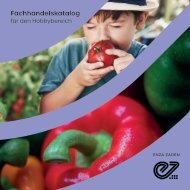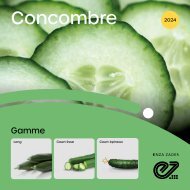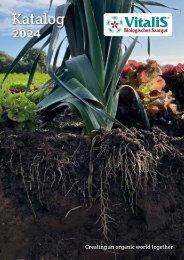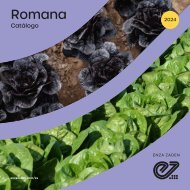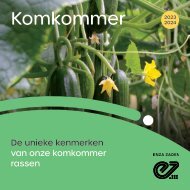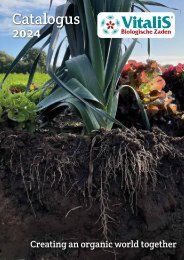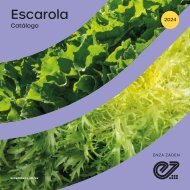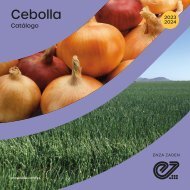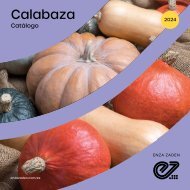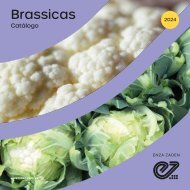Vitalis Catalogue 2020 USA & Canada
Create successful ePaper yourself
Turn your PDF publications into a flip-book with our unique Google optimized e-Paper software.
Index<br />
Resistance Makes the Difference<br />
Cooking is hot, and fresh herbs are part of that<br />
trend. In the Western World the demand for live<br />
herbs in pots, clamshells and fresh cut bunches<br />
has been steadily increasing for many years<br />
now. No surprise there, because what could<br />
be easier and more satisfying than snipping a<br />
fresh bouquet garnish on your own window<br />
ledge, balcony or patio? <strong>Vitalis</strong> supports this<br />
development by offering both growers and end<br />
users herb varieties that are less susceptible to<br />
diseases and have extended shelflife.<br />
Focus on resistance<br />
Around ten years ago we tightened the breeding<br />
objectives of several herb varieties to gear them<br />
more to the needs of our customers and end<br />
users. They want plants with good resistance and<br />
year-round homogeneous, reliable production.<br />
Therefore, we now actively focus on resistance<br />
and quality traits breeding by selecting and<br />
crossing specific genetic characteristics that<br />
make the plants resistant or less susceptible<br />
to common diseases with extended shelf<br />
life. Important in the breeding process are<br />
resistances to the most common fungal diseases<br />
and tolerance of low temperatures in parts of<br />
the supply chain. And year-round production<br />
and supply are an absolute must for the large,<br />
specialist commercial nurseries.<br />
Successful varieties<br />
The focus on genetic resistance and extended<br />
shelf life has had the desired effect. In 2016,<br />
we officially launched our first Downy Mildew<br />
intermediate resistant basil variety on the<br />
market with overwhelming success, ‘Eleonora’.<br />
Since then, we released another Downy Mildew<br />
intermediate resistant basil variety targeted<br />
explicitly for hydroponic production, ‘Emma’. We<br />
also commercialized the basil variety ‘Elidia’ that<br />
is resistant to Fusarium, which can cause root rot.<br />
Elidia also produces high yields of large leaves<br />
and excellent field standability. For hydroponic<br />
growers seeking a variety that has improved<br />
tolerance to cold in the supply chain, we offer<br />
‘Keira’ basil. Simultaneously, we have introduced<br />
parsley varieties with intermediate resistance to<br />
Downy Mildew: a large flat-leaf parsley variety<br />
with high yields, thick long stems, and a brilliant<br />
glossy green color ‘Peione’ – perfect for pots or<br />
bunch.<br />
Second generation<br />
We refer to them as the herb varieties of the<br />
‘second generation’: varieties that have an<br />
attractive color and good flavor, and at the same<br />
time ensure more reliable cultivation and better<br />
shelf life, keeping a quality product at the end<br />
consumers’ homes. These varieties are a bit<br />
more forgiving in conditions that are not ideal,<br />
which can happen in the sales channel and in<br />
consumers’ homes.<br />
Quality mark<br />
In the coming years we will continue to steadily<br />
expand our range of resistant and tolerant herb<br />
varieties for sale in pots, clamshell and bunch. To<br />
indicate these second generation herb varieties<br />
we developed a quality mark, called ‘Resistance<br />
Makes the Difference’. With this quality mark we<br />
can indicate these varieties to our customers. In<br />
that way they know immediately, which varieties<br />
have the special characteristics that will enhance<br />
their production and consumption experience.<br />
42




